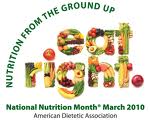An important topic to stress, given this year’s national nutrition month’s theme is to increase color in your diet, is the importance of adding color naturally. Colorful foods have long been known to be more appealing and food manufacturers have attempted to capitalize on this fact by enhancing the color of the foods they sell. Hence, the birth of color additives. Color additives are fairly widespread. Without them, cola wouldn’t be brown, margarine wouldn’t be yellow, and farmed salmon wouldn’t be pink.
There are two basic types of color additives. Some are pigments that come from natural sources, such as vegetables, minerals, or animals. A few examples of these are annatto extract, dehydrated beets, paprika, and caramel. Other color additives are synthetically produced and as such, are subject to approval by the FDA based upon research. It is these color additives of which to be aware. Yes, they are approved but given the fact that they are still artificial additives and some research is controversial, it is wise to monitor your intake and choose natural colors as much as possible. Artificial colorings most controversial include Red 3, Yellow 5, and Yellow 6.
It is interesting to note that different versions of the same foods are sold in the United States compared to Europe due to a stricter policy in Europe on artificial colorings. This begs the question, why the need for artificial coloring in the US if it looks just as well using natural colors? Increased public pressure on the FDA may help change their policy. Until then, is it really worth the risk to have a green colored mint ice cream?




